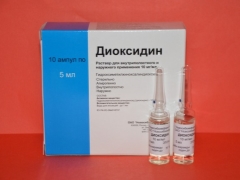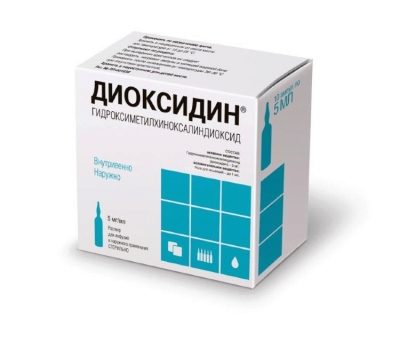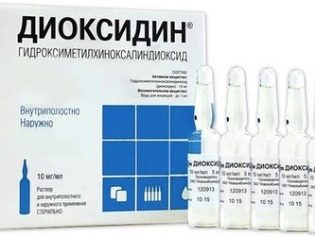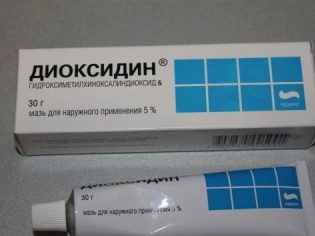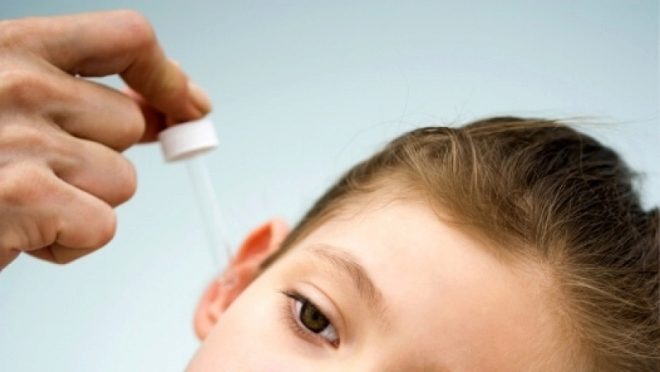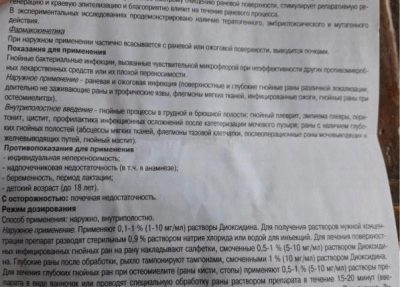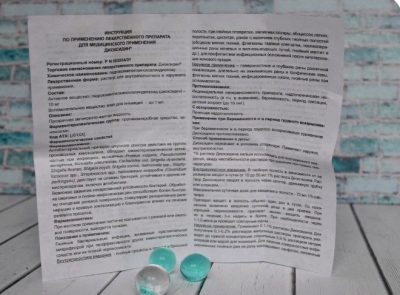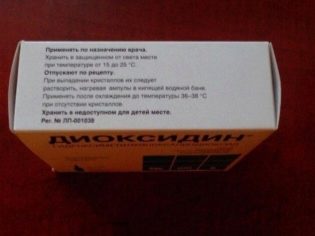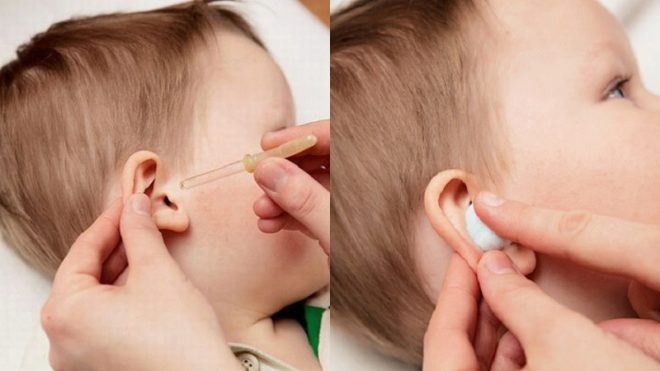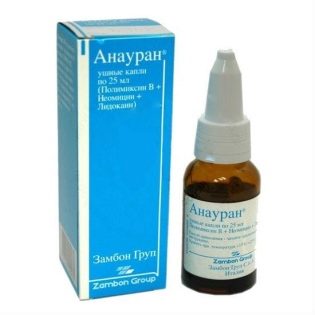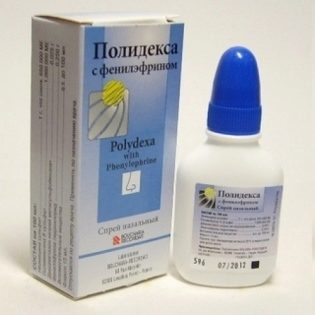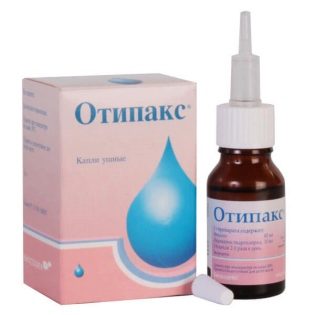The use of dioxidine in the treatment of ear diseases in a child
«Dioxidine"Is a fairly effective antimicrobial drug, which is often prescribed for adults with various purulent infections. Since in the annotation to such a tool in the list of contraindications is the child's age, many mothers begin to worry if "Dioxidin" assigned to their child in the form of ear drops. Not everyone knows whether it is possible to use such a medicine for children and how to drip in their ears with this remedy.
Composition and form
The drug is available in solution and as an ointment. For ear diseases, a 0.5% sterile solution is used, which is sold in 5 and 10 ml ampoules of 5 or 10 pieces per pack. This solution has a yellowish green color and contains only the active substance, called hydroxymethylquinoxalinedoxide, and water for injection. It must be completely transparent.
If crystals are visible inside the ampoule, the drug is first heated in a water bath until it is dissolved, and only then is it used.
You can also drop 1% solution into your ears, but dilute it with sterile water or saline before use. This drug is identical to 0.5% solution and differs from it only in the concentration of the active ingredient, which instead of 5 mg is 10 mg per 1 ml of the product.
How does it work?
The drug has a bactericidal effect on many types of microorganisms, among which are isolated clostridia, proteus, Klebsiella, pseudomonads and other bacteria. Moreover, Dioxidine often destroys pathogens against which other antibiotics have proven impotent. This action is associated with the ability of the drug to damage the DNA and membranes of microbial cells.
The same effect causes the toxicity of "Dioxidin", because the drug can adversely affect the patient's tissues. However, the harmful effect of the solution is noted mainly with intravenous and intracavitary use, as well as at high dosages.
Local use in the ear in the dosage prescribed by the doctor is not dangerous if there is evidence for such treatment and the medicine was prescribed by a specialist.
Indications
In the treatment of ear diseases, “Dioxidin” is used mainly in cases when other antibacterial agents have not coped with inflammation (or the patient needs a potent drug). The drug is used for purulent otitis, as it is this ear disease caused by infection with bacteria.
"Dioxidin" is also often prescribed in the nose, especially with prolonged bacterial rhinitis or sinus. For diseases of the bronchi, this drug is recommended to be used for inhalation with a nebulizer, diluting the agent with saline.
Other methods of administering "Dioxidine" are used less frequently, usually during inpatient treatment (for example, the drug is injected drip into a vein during meningitis).
Contraindications
The tool is not prescribed for intolerance, as well as in case of insufficiency of the adrenal glands, since the active substance "Dioxidin" can adversely affect the work of these glands. If the child has impaired renal function, the use of medication requires caution.
Side effects
Local use of "Dioxidin" can cause an allergic reaction (itching, swelling, dermatitis). For this reason, it is worth starting the treatment with Dioxidine with a sensitivity test. After dropping a drop of the drug into your child’s ears, you need to wait a few hours and make sure that there are no negative symptoms.Only after that it is permissible to use the agent in the dose prescribed by the doctor.
Instructions for use
- Prepare for the procedure, a pipette, a vial of Dioxidin, a bottle of 3% peroxide solution and cotton wool.
- First, carry out cleaning of the external auditory canal by inserting cotton wool soaks soaked in peroxide into it. This will remove pus and other contaminants, which will allow the drug to act more efficiently.
- "Dioxidin" should be warm, as cold drops can cause pain. The ampoule before use can be held in your hand or slightly heated in a water bath.
- Carefully opening the vial, pipette the solution.
- Putting the child on its side, grasp the ear with your fingers and gently pull it so that the ear canal is flattened.
- Inject the medicine into the ear in the dose prescribed by the doctor (usually 1-3 drops) and have the child lie down for a few minutes calmly.
- Having turned the small patient to the other side, repeat all actions for the second ear.
Usually, the procedure is carried out three times a day, and the duration of treatment is from 3 to 5 days. However, the doctor may prescribe a different mode of administration.
Terms of purchase and storage
Acquisition of "Dioxidine" ampoules is possible only if you have a prescription given by a pediatrician, an ENT specialist, or another doctor. The cost of packaging of 10 ampoules on average is 350-400 rubles.
Store the drug at home should be at room temperature. The shelf life of the solution is 2 years, and the opened ampoule cannot be stored. In order not to throw away the rest of the drug from the ampoule, it can be poured into a bottle with a rubber cap or into a syringe.
Reviews
About the treatment of otitis media "Dioxidin" in children respond mostly well. Moms say that the drug is very effective for purulent inflammation and helps to quickly eliminate it. An allergic reaction to such a remedy is rare, and other side effects do not appear when the dosage is observed.
Analogs
Instead of "Dioxidine"Dixin or Dioxisept can be dripped into the ear, as these solutions contain the same active compound. In addition, the medication can replace other antibacterial agents in the form of ear drops ("Anauran», «Polydex», «Otipaks"), But such an analogue should be selected with a specialist.
How to use Dioxidine, see the video below.
